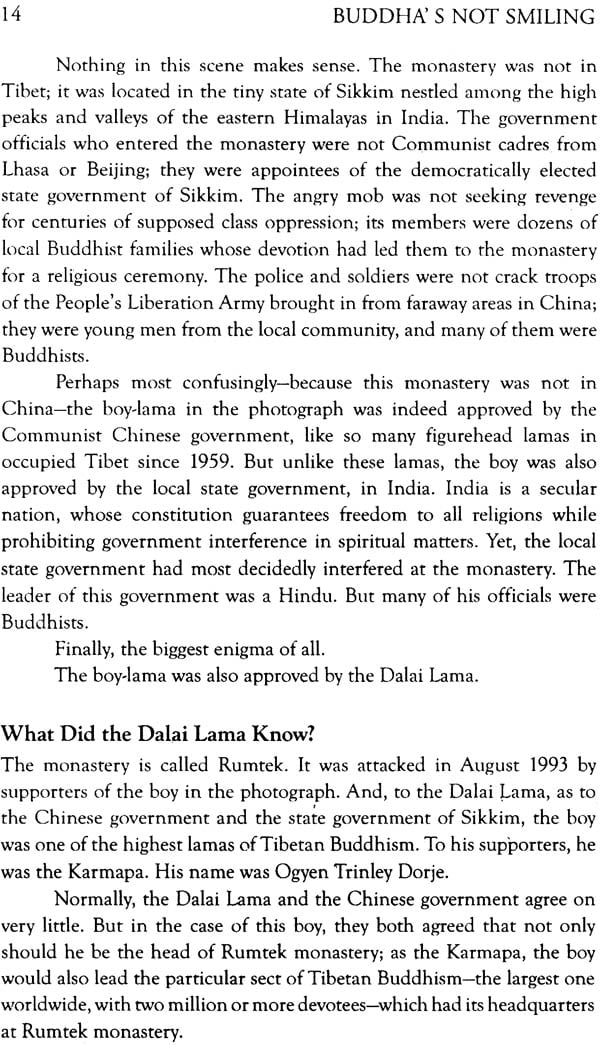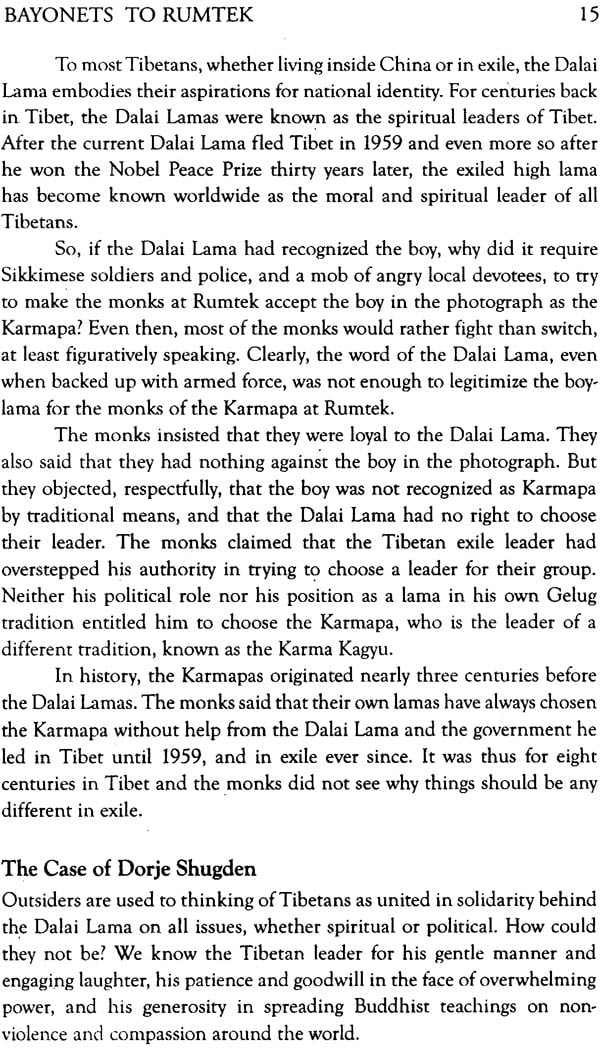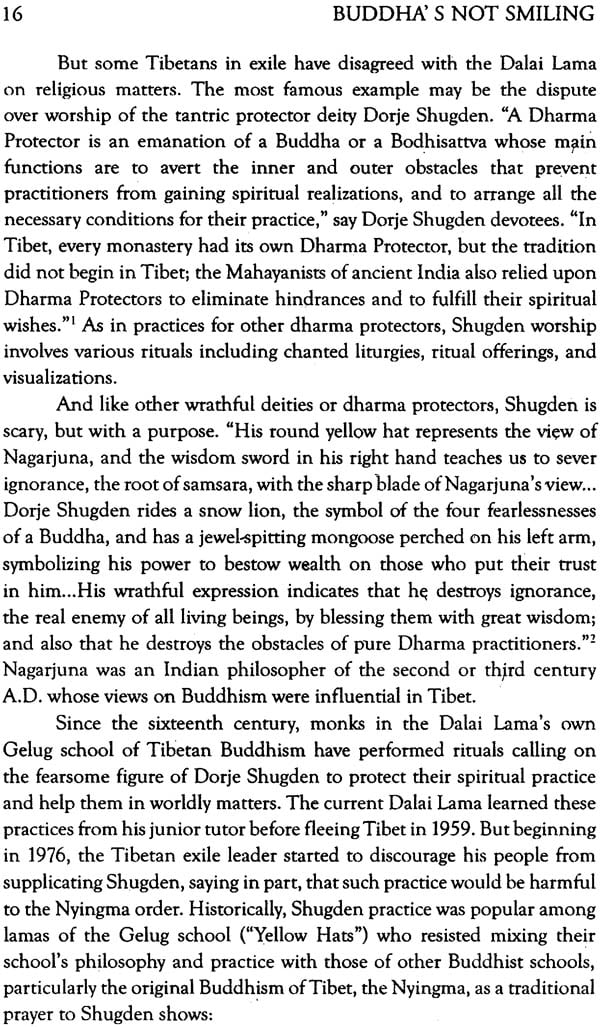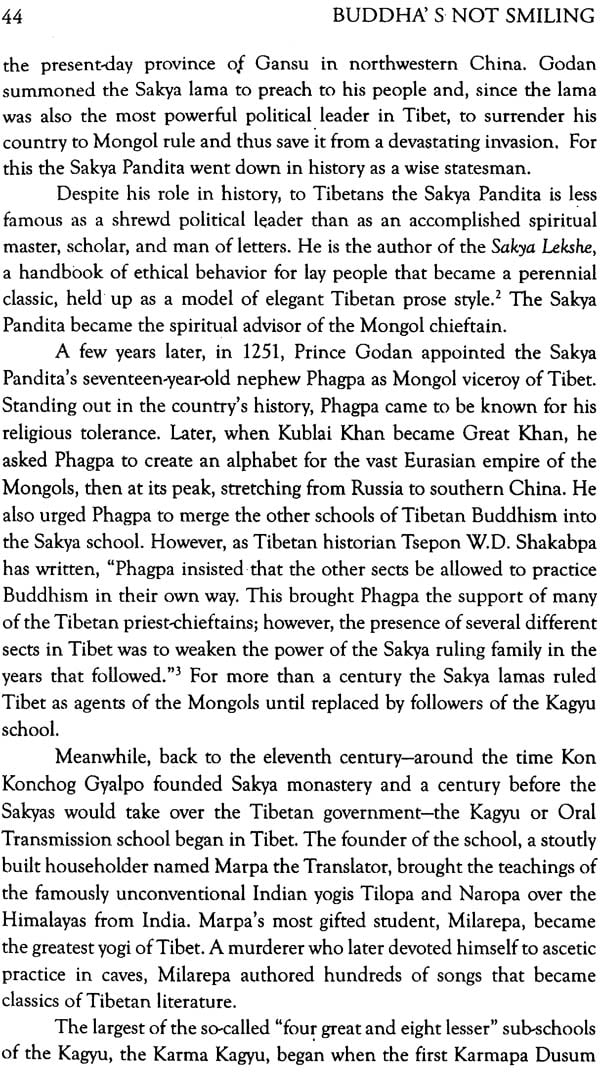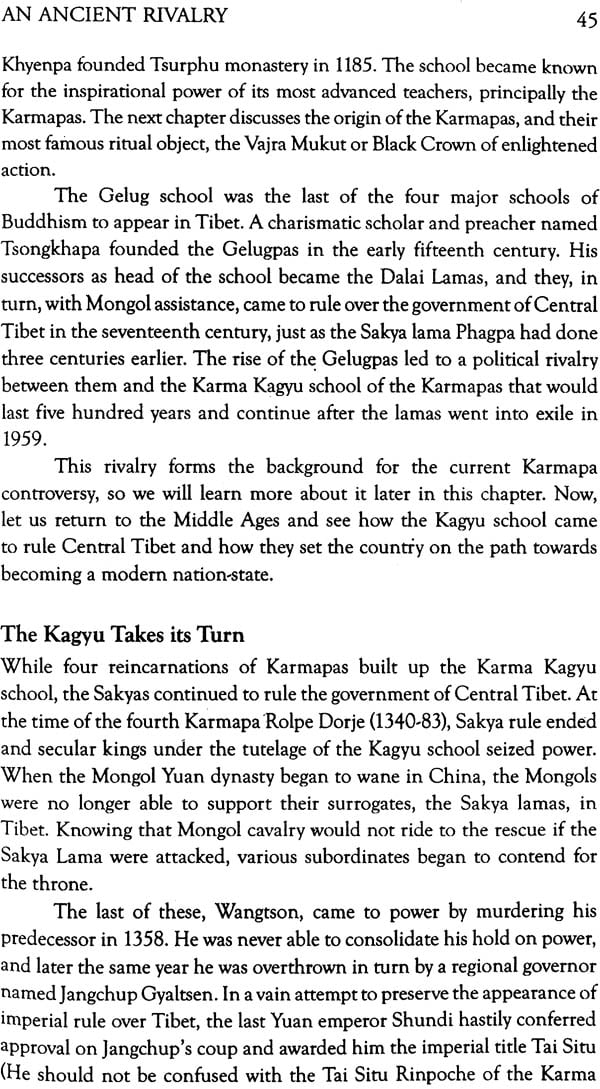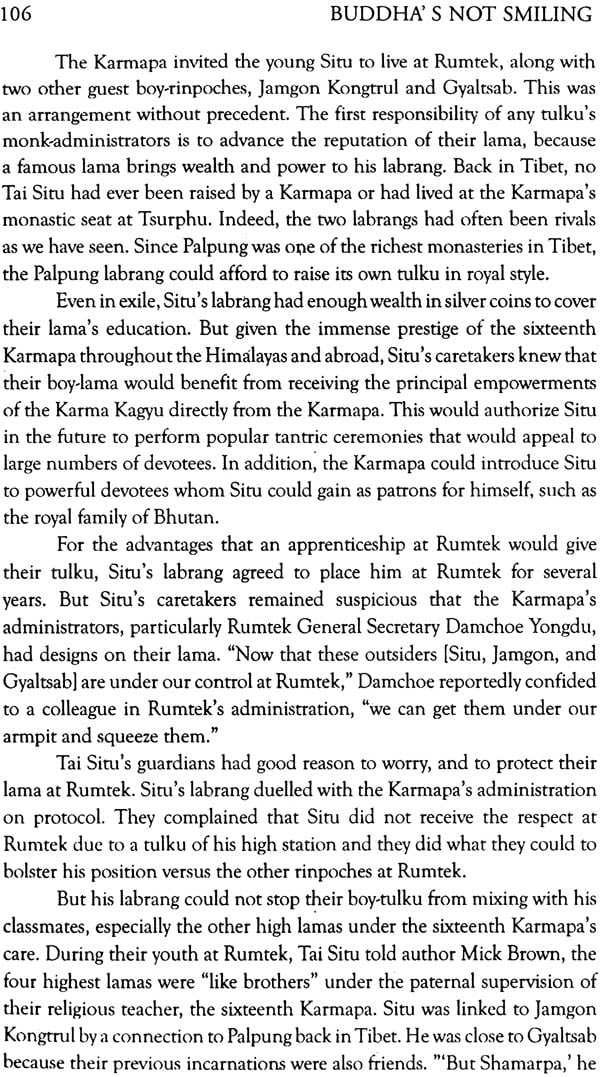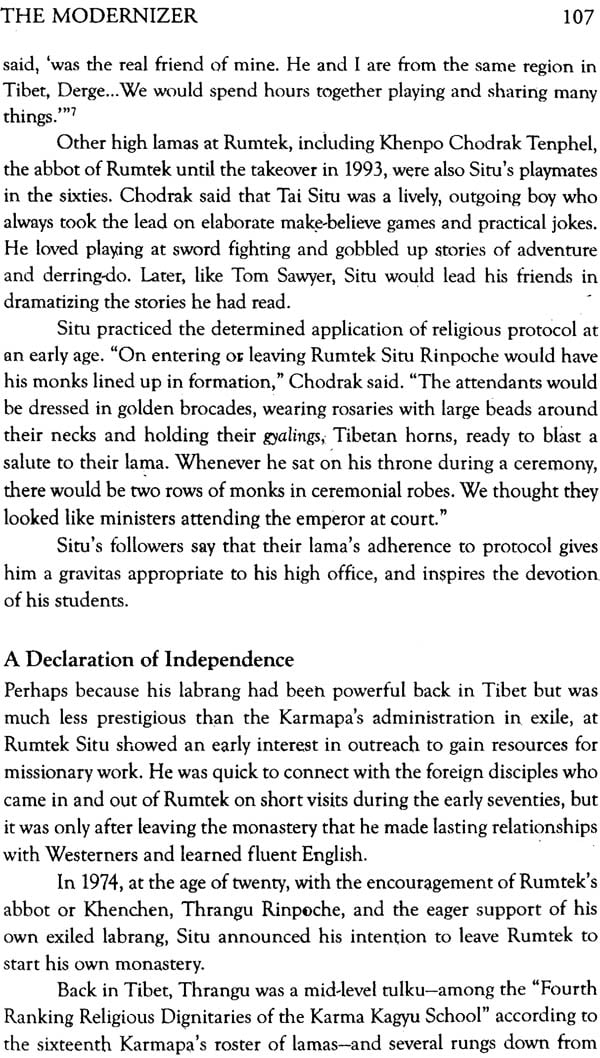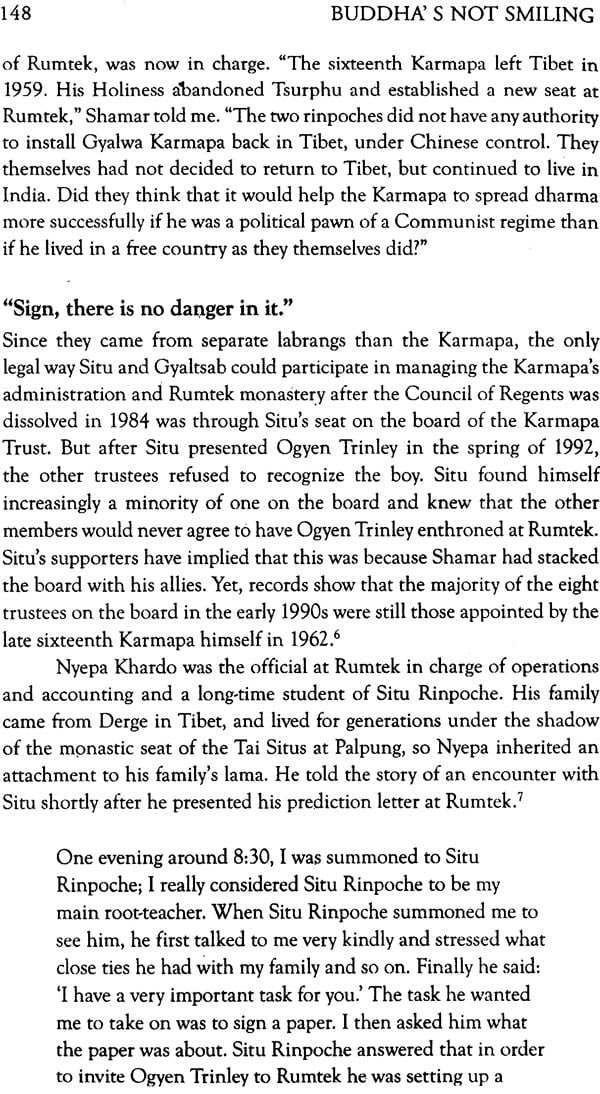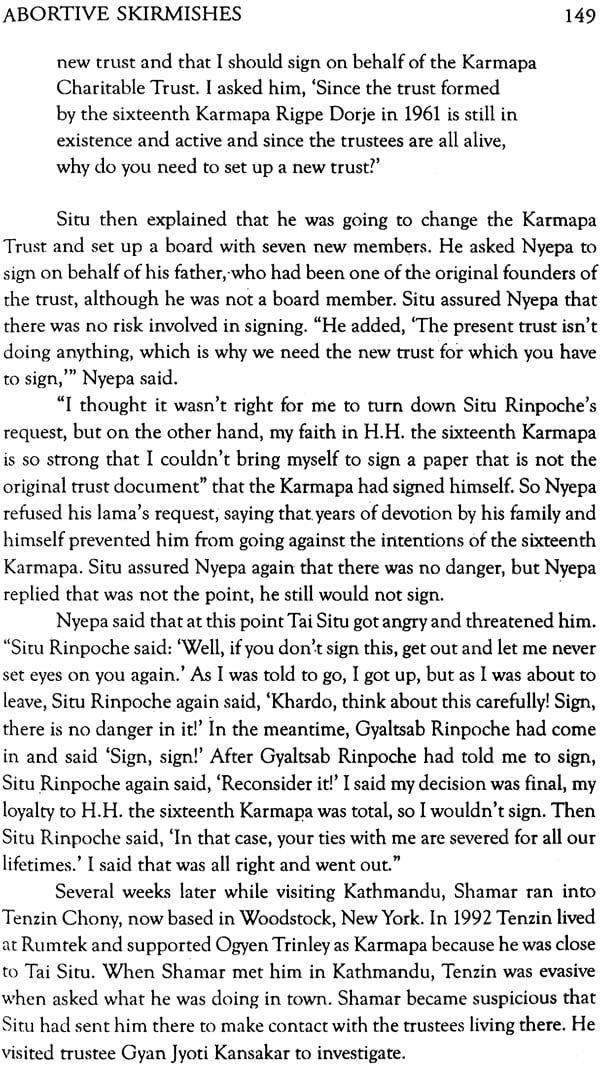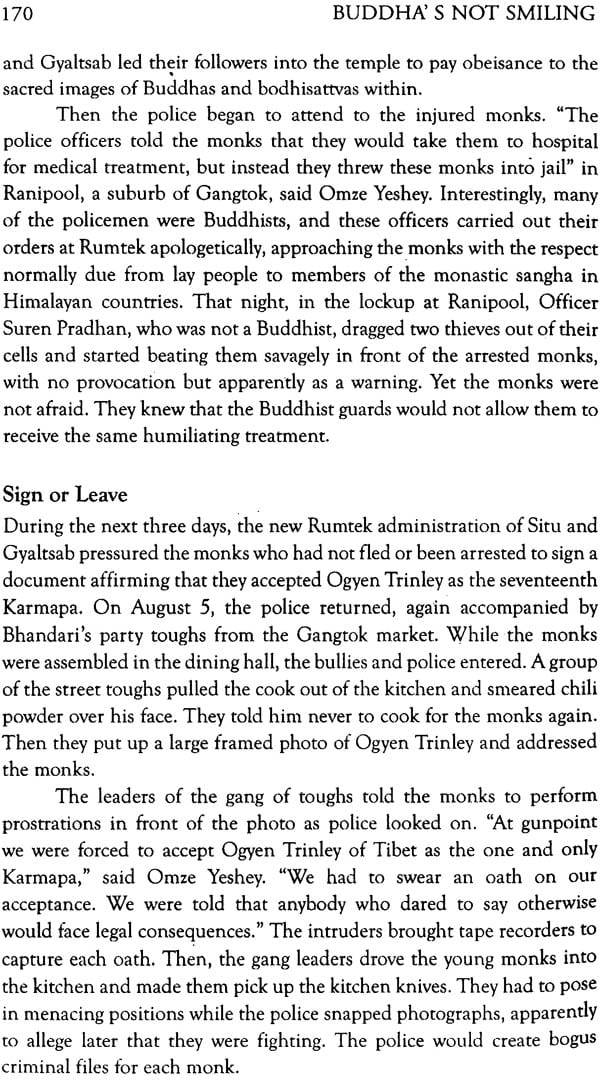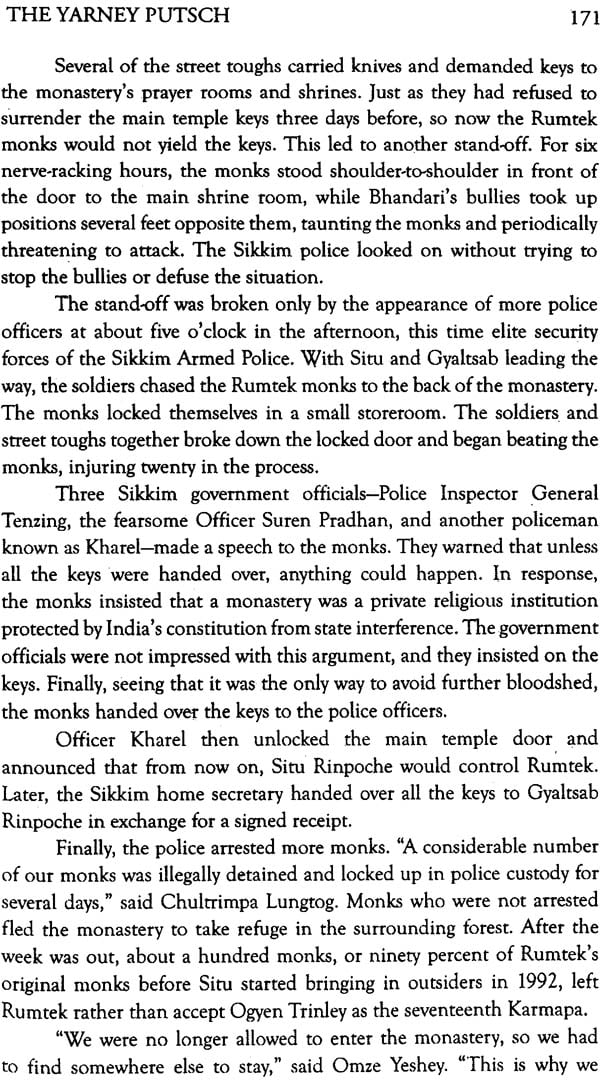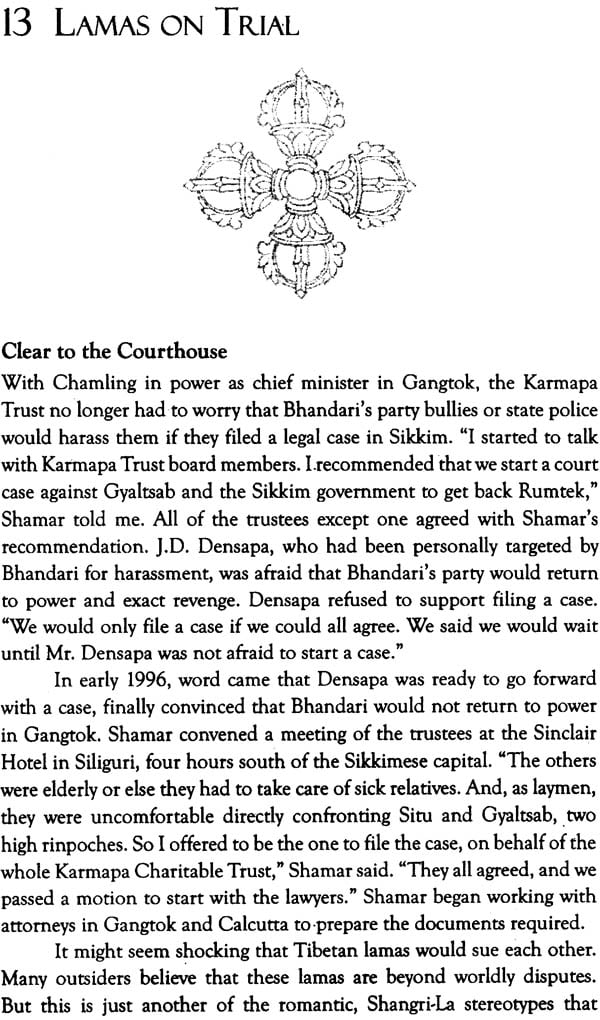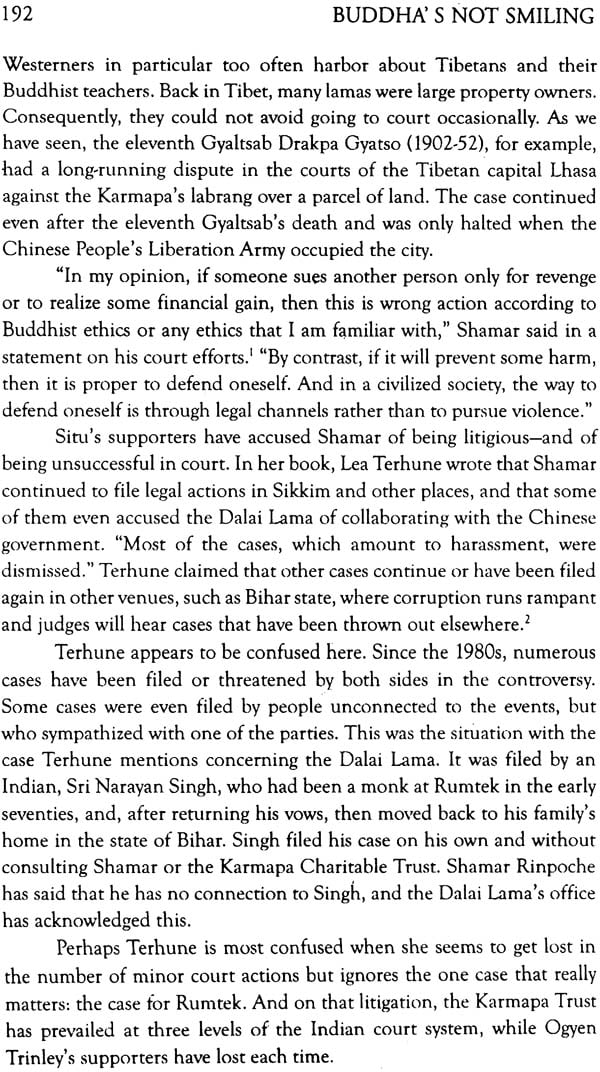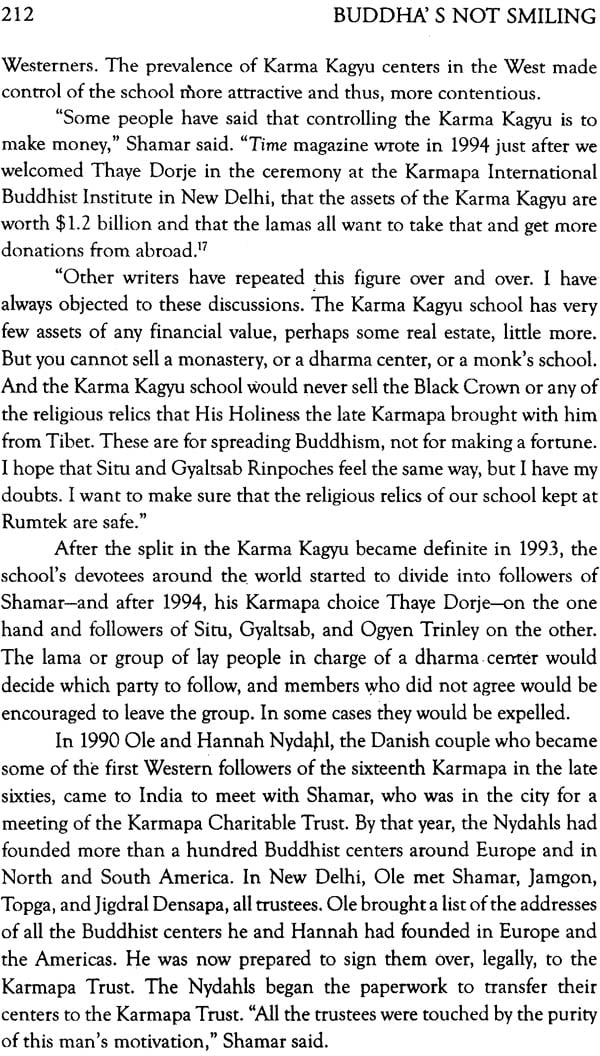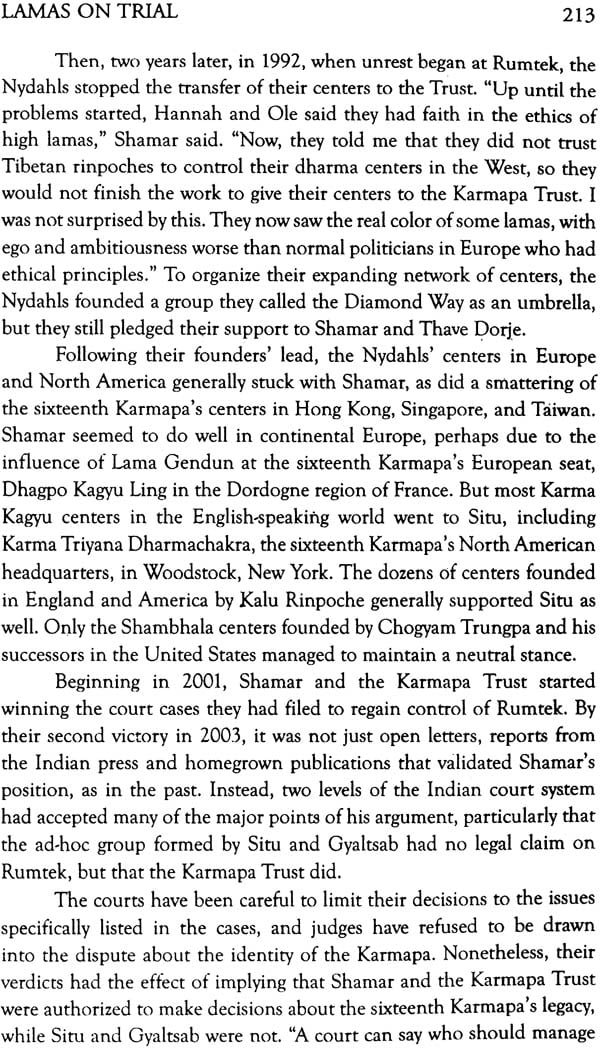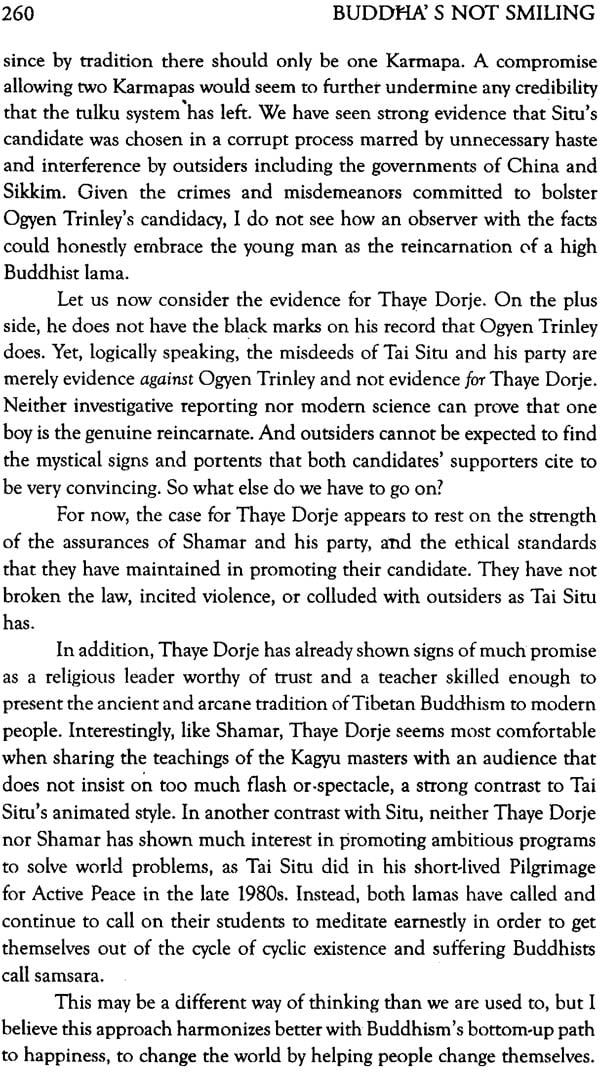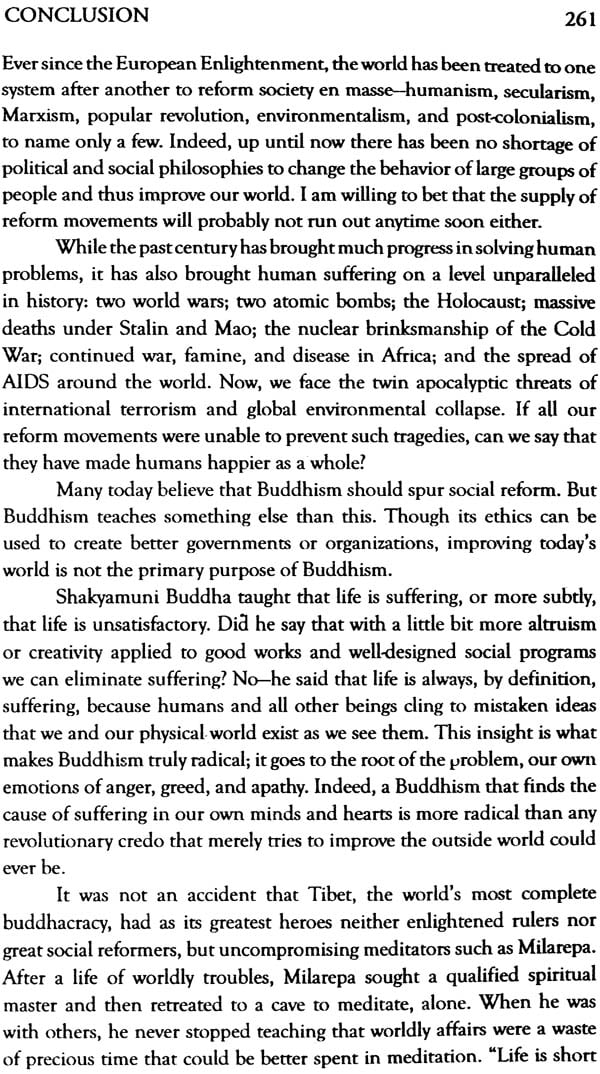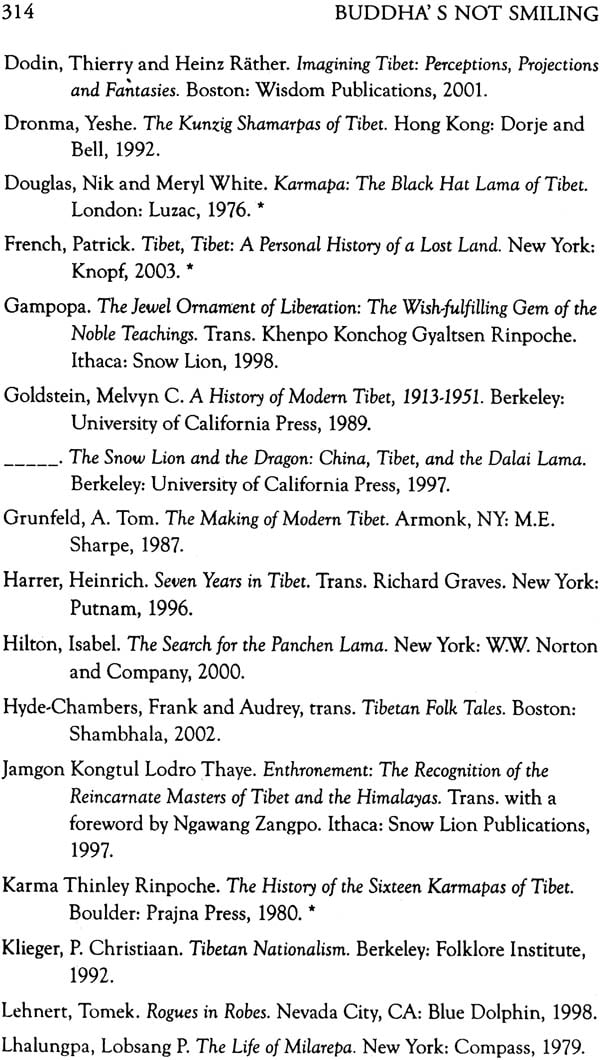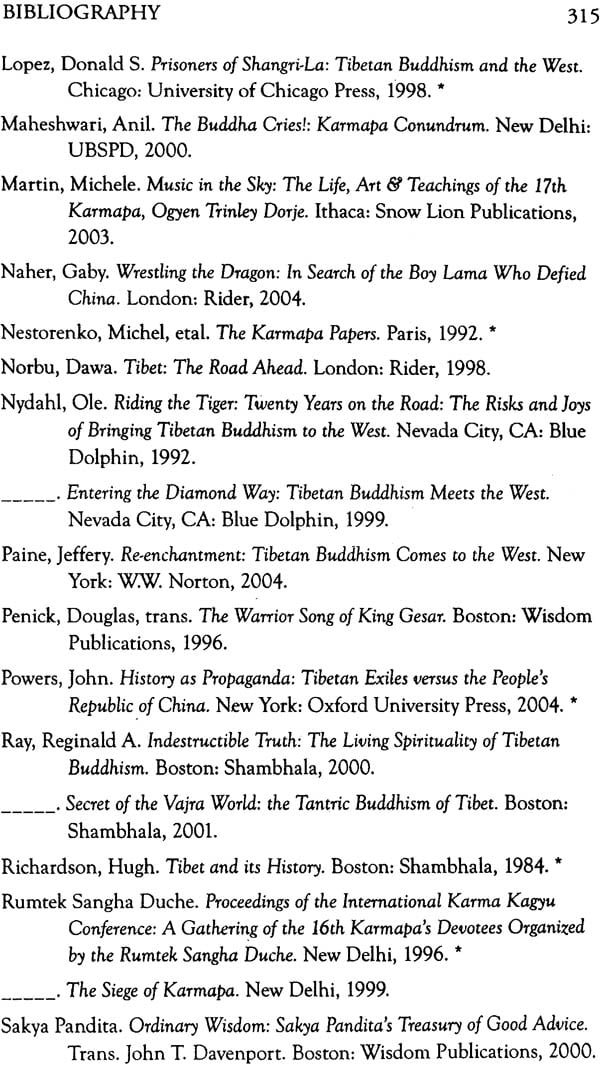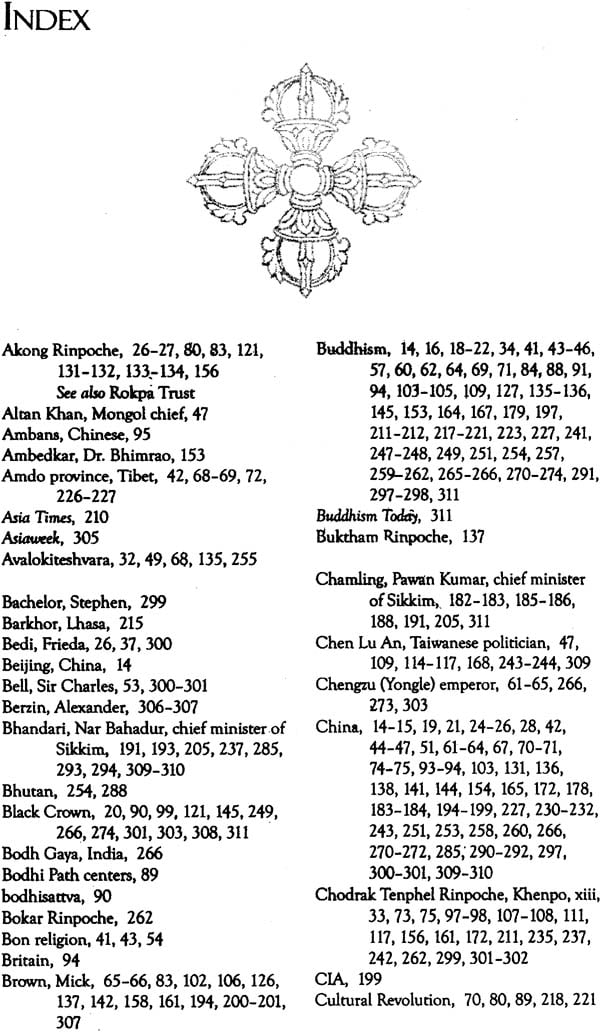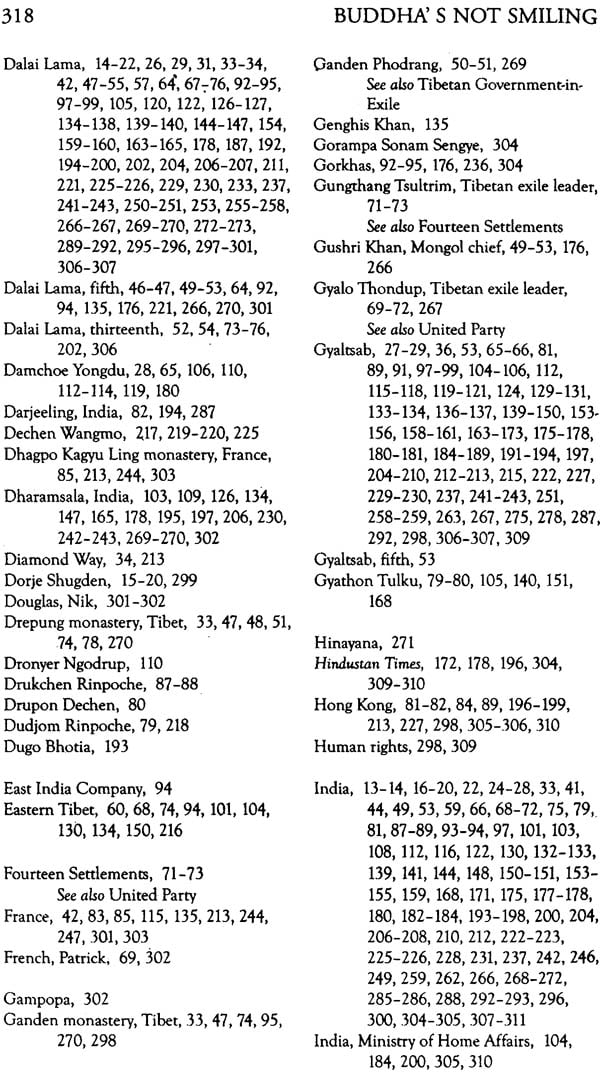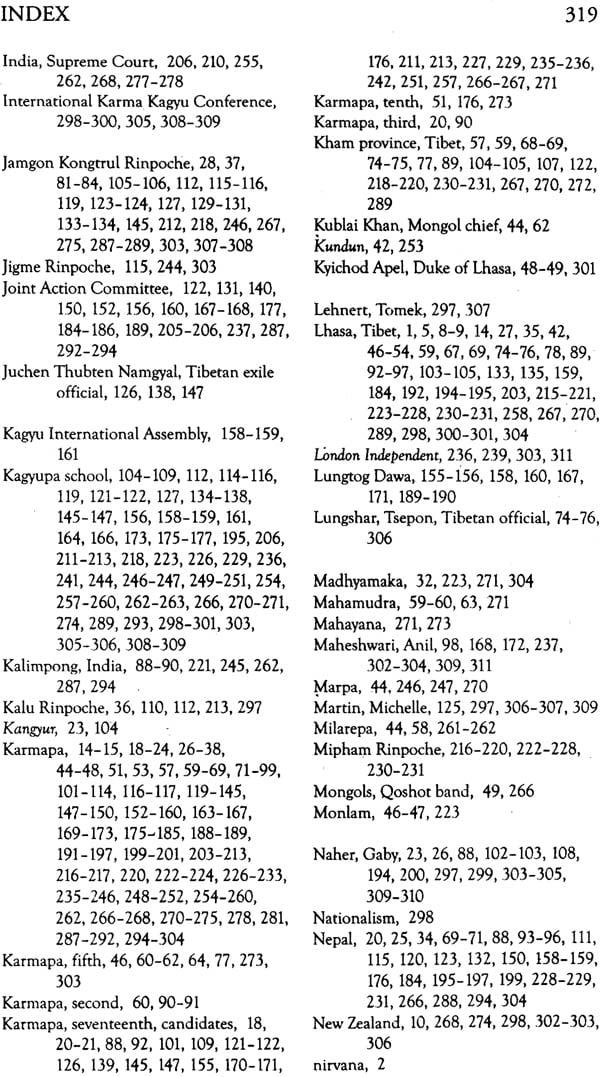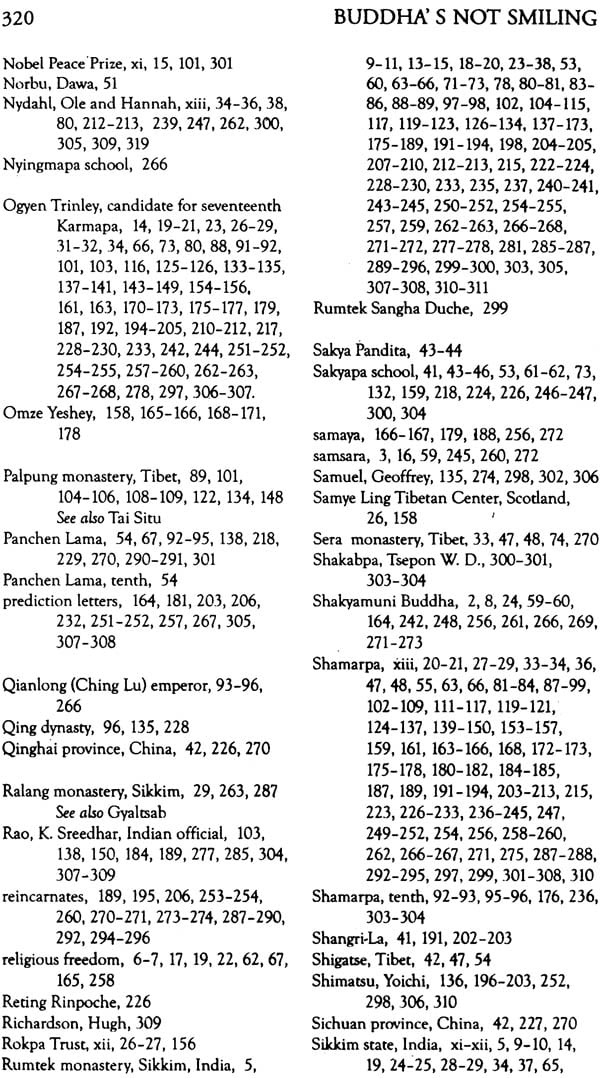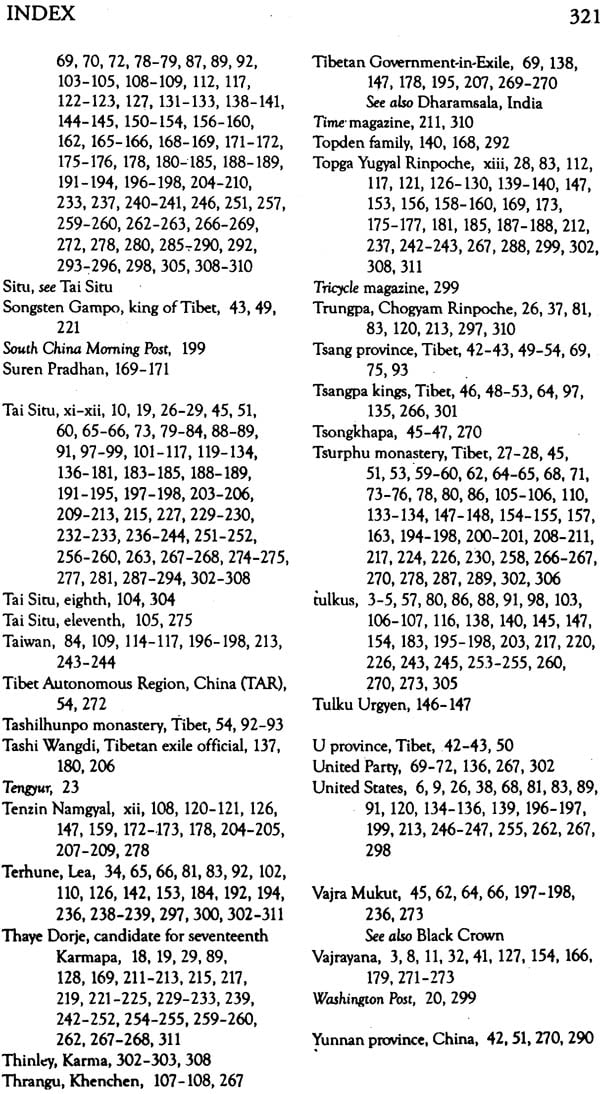
Buddha’s Not Smiling (Uncovering Corruption at the Heart of Tibetan Buddhism Today)
Book Specification
| Item Code: | IHE016 |
| Author: | Erik D. Curren |
| Publisher: | Motilal Banarsidass Publishers Pvt. Ltd. |
| Language: | English |
| Edition: | 2014 |
| ISBN: | 9788120833319 |
| Pages: | 351 (32 B/W Illustration) |
| Cover: | Paperback |
| Other Details | 8.5" X 5.5" |
| Weight | 400 gm |
Book Description
This book is about corruption in Tibetan Buddhism, but not about sex scandals. We have already seen discussions about Buddhist teachers, particularly well known Zen masters and Tibetan lamas, having romantic affairs with their students, especially those from Western countries. This is nothing new, and it afflicts Buddhism as it does all other major religions. Here, I do not touch on this topic.
Instead, I explore a type of corruption that I believe is much more insidious, and whose exposure can be of much greater benefit to people seeking to find meaning in this lives through a spiritual path, or just trying to understand the massive phenomenon that Tibetan Buddhism has become in the past thirty years. This book is a history of a dispute among the highest lamas with roots centuries in the past and a present of deep shame. It is a dispute over the identity of a lama called the Karmapa.
I have been a student of Buddhism for a decade. I was inspired by this ancient path’s time-tested methods to escape suffering, and by the example of compassionate living offered by Tibetan lamas. A few years ago, when I first heard how spiritual leaders who stand for love, peace, and nonviolence had behaved in this dispute I was shocked and disillusioned. Were Tibetan lamas just hypocrites and charlatans? If this was so, I would have been ready to give up Buddhism altogether. The only way I could remain was to discover the facts for myself.
So that’s what I set out to do. In the process, I discovered a dark side to some Tibetan lamas. But I also developed a confidence in the basic teachings of a spiritual tradition that was more mature, based on my own investigation, rather than merely on hopeful faith. I believe that this journey did me much good, and helped me grow intellectually and spiritually. I hope the reader will take much the same journey in these pages, and discover some of the same benefit along the way.
For the past three years, I have been a student of one of the main lamas involved in the controversy, Shamar Rinpoche. Thus I cannot claim to be a disinterested outsider. Shamar even suggested that I write this book. Four books have already come out in the last few years sympathetic to the views of his opponents. These books raised many questions for me about the purity of Tibetan Buddhism, and I am sure they raised the same questions for many others. So it seemed only fair to investigate Shamar’s claims and give him a chance to tell his story. The following pages try to disentangle the many knots in the web of claims, counter-claims, and outright deceptions that have come to enshround the topic of the Karmapa today.
Tow young men are at the center of our story, and both of then claim to be the Karmapa. The four most recent books on the subject all refer to one of the young men as “the Karmapa” while calling the other by his enthronement name, the equivalent of a personal name. Here, I begin from the premise of an authentic controversy, so I do not presume to know which candidate is the genuine reincarnate. Accordingly, I do not call either candidate “the Karmapa.” Instead, I refer to each young lama by his enthronement name. I hope this will make for a fairer presentation that is also clearer for the reader.
I would like to invite you, the reader, to make your own judgment on the specific issue of this book-the story of the Karmapa. Considering the evidence, whom do you believe and whom do you trust? After that, it may be fruitful to consider how this connects to your attitude about Tibetan Buddhism and spiritual teachers in general. Finally, if you follow a spiritual tradition, or if you know someone who does, then I encourage you to meditate on what it means to follow a spiritual teacher with maturity, as an intelligent person in the modern world. Is it possible to balance faith and logical thinking? Does rationality conflict with faith, or can rationality enrich faith? When should we just believe, and when should we ask questions?
If you can prove any of my claims wrong please contact me directly, I will correct them in future editions.
Introduction
Near the beginning of Martin Scorsese’s 1997 film Kundun, a search party from Lhasa arrives at a small village in the dusty northeastern borderlands between Tibet and China. The time is the late 1930s. the visitors are looking for a boy who they think might be the reincarnation of the thirteenth Dalai Lama Thubten Gyatso (1876-1933), who died a few years earlier.
Before his death, the Tibetan leader had left a letter, written in an obscure poetic style, indicating the family and place of his rebirth. Following their late lama’s instructions, and consulting intelligence reports, the Dalai Lama’s administration in Lhasa had put together a list of likely boys-candidates for the Dalai Lama’s reincarnation.
Now, the Lhasa lamas have come to a remote province to investigate one of these boys, the son of a peasant family. Disguised as traders, they have not divulged the purpose of their mission to the small boy or to his parents. The lamas have brought personal items of the deceased Dalai Lama to test the boy. Inside the family’s rustic house, they spread these items out on a table and mix them together with newer, fancier versions of each object.
The parents bring in their boy and the disguised lamas invite him to choose “his” belongings-those which belonged to the thirteenth Dalai Lama. Unprompted, the boy correctly chooses the Dalai Lama’s rosary, ritual drum, and walking stick, leaving the more attractive, newer ones on the table. The boy has passed the test: he is the genuine reincarnation of the thirteenth Dalai Lama. Convinced, the lamas prostrate to the boy, and address him as “Kundun,” a title of respect for the Tibetan leader.
Buddhists everywhere believe that humans and all other beings die and then are reborn again and again in endless reincarnations, until they reach the state of enlightenment. Enlightenment, or nirvana, is the end of all suffering and the goal of Buddhism. Buddhists believe that enlightenment is reached by developing perfect wisdom and compassion through following the Noble Eightfold Path of correct view, goal, speech, action, livelihood, effort, mindfulness, and meditation.
Siddhartha Gautama, a prince of the Shakya clan that ruled one of the small kingdoms in the Himalayan foothills of northern Indian in the sixth century B.C., set the example when he renounced palace life and took to the road as a wandering ascetic. After years of fruitless practices, one day the young man sat down on a pile of grass under a large leafy tree by the Naranjana River. He determined not to rise from his seat until he surmounted all craving, thus liberating himself from the need to be reborn again in the physical world. He meditated through the night, resisted all the blandishments and threats of Mara, the lord of death, and as the sun rose, the young man reached enlightenment, thus becoming the Buddha or Enlightened One.
Known as Shakyamuni or the Sage of the Shakyas, the Buddha spent the next forty years traveling around northern India, giving sermons on the way out of suffering, and gaining disciples. He formed a community of monks, and later, an order of nuns, creating the Buddhist sangha of ordained practitioners. As needed, the Buddha came up with rules to ensure the harmony of the sangha, and his disciples codified teaching on the impermanence of all beings and things, including the Buddha himself. After his death, the Buddha’s disciples carried on the work on the monastic sangha and passed along the Buddha’s teachings as the sutras.
After a couple of centuries, Buddhism began to divide into three main approaches, or paths. Of Buddhism is defined by its religious practice as well as by the geographical areas it came to occupy.
The Theravada, or “Teaching of the Elders,” developed out of one of the early Buddhist schools of India, and taught the value of ascetic monastic practice in order to become an arhat, a “worthy one” who has freed him-or herself from all worldly craving and from the endless cycle of birth and death known as samsara. Theravada Buddhism can be traced to the third century B.C. and is found today in the nations of south and Southeast Asia, including Sri Lanka, Thailand, and Burma.
Some early Buddhists criticized a focus on one’s own salvation, not explicitly thinking of others, as inherently selfish and dubbed it the Hinayana or “Narrow Path.” As an alternative, in the first century B.C. teachers began to present the Mahayana or “Great Path,” in which altruism became the path to enlightenment. Mahayana practitioners sought to become bodhisattvas, beings who every thought, word, and deed was dedicated to saving all beings from suffering. Today, the Mahayana is found in East Asian countries including China, Japan, Korea, and Vietnam.
The path of the bodhisattva was said to be a sure path to enlightenment, but was also said to take millions of lifetimes to achieve. Northwestern India came upon a more powerful approach, one they said could bring enlightenment in one lifetime, the Vajrayana, or “Diamond Path.” Vajrayana or Tantric practitioners sought to save themselves and all beings by realizing the enlightened qualities in their own cravings and illusions. Indian missionaries brought this supercharged version of the Mahayana over the Himalayas to Tibet beginning in the eighth century.
While all Buddhists believe in rebirth, only in the Himalayas did people come to believe that their highest spiritual teachers consciously chose to return to teach their students, lifetime after lifetime.
According to Vajrayana belief, after death, these teachers were reborn as reincarnate lamas, or tulkus, whose boundless compassion led them to postpone the bliss of enlightenment until all living beings would be liberated as well. The tulku is the Himalayan embodiment of the Mahayana ideal of the bodhisattva, but the tulku system is found in no other branch of Buddhism and in no other major religion. It is unique to Vajrayana Buddhism, and since its origin in the thirteenth century, the tulku ideal has been as important source of power, purity, and authenticity in the Diamond Path.
One practical advantage of the tulku system at its inception was to take politics out of deciding who would lead a monastery after its last leader’s death. Previously, in Tibet, powerful aristocratic patrons would use their influence to get one of their sons appointed to lead a monastery. This effectively put the cloisters under the control of local landowners and warlords and made the religious centers subject to the rivalry of competing families. These families involved lamas in their political conflicts and disrupted the monasteries’ spiritual work. The tulku system promised to solve this problem. Over eight centuries that followed, reincarnate lamas became the bedrock of Tibetan religion and the foundation of the largest monastic system on earth.
The First Tulku of Tibet Today, in Tibetan Buddhism, there are hundreds of lamas reputed to be tulkus. The Dalai Lama-the current incarnation Tenzin Gyatso is the fourteenth of his life-is the most famous tulku of Tibet. But he and his thirteen predecessors were not the first lamas said to take rebirth intentionally to continue their work as bodhisattvas. The first tulku of Tibet was a lama known as the Karmapa.
In the twelfth century, the first Karmapa Dusum Khyenpa predicted that he would return to teach his students and manage his monastery in his next lifetime. And sure enough, when Dusum Khyenpa died, his students located a boy who showed sings that he was the reincarnation of the Karmapa. The boy was named Karma Pakshi and when he was old enough, he inherited control over the Karmapa’s cloister and his activities. From then on, the Karmapa’s monastery was relatively free of control by local noble families. Being able to choose their own leader, the Karmapa’s lamas became masters of their own destiny.
Impressed by the success of this system, other monasteries copied it as a means to choose their own top lamas. Thus, over a period of a couple centuries, power shifted in Tibet from land-owning families to the lamas who managed the most powerful monasteries. The most revered tulkus attracted donations and students, developing monastic empires and political power of their own. As tulkus became major political leaders in their regions, lama-rule in Tibet reached its apex. In the late fourteenth century, nearly three centuries after the first Karmapa, the Dalai Lamas would appear. Two centuries after that, in 1642, the fifth Dalai Lama would take over the throne of central Tibet from a dynasty of secular kings.
Outsiders might think that tulkus were always chosen according to set procedures laid down to ensure the accuracy of the result-that the child located would be the genuine reincarnation of the dead master as in the scene from the movie Kundun. But in Tibetan history, tulku searches were not always conducted in such a pure way. Because reincarnating lamas inherited great wealth and power from their predecessors they became the center of many political disputes.
Tulkus were often recognized based on non-religious factors. Sometimes monastic official wanted a child from a powerful local noble family to give their cloister more political clout. Other times, they wanted a child from a lower-class family that would have little leverage to influence the child’s upbringing. In yet other situations, the desires of the monastic officials took second place to external politics. A local warlord, the Chinese emperor, or even the Dalai Lama’s government in Lhasa might try to impose its choice of tulku on a monastery for political reasons.
Only the strongest monastic administrations had the ability to resist such external pressures, and the Karmapa’s monastery was one of these. Sixteen Karmapas were recognized by the Karmapa’s own monastery without participation from outsiders. Only in one instance, when the sixteenth Karmapa was recognized in the 1920s, did the Tibetan government of the thirteenth Dalai Lama try to intervene in choosing a Karmapa. In that case, as well will see later, the government ultimately had to back down.
When the highest lamas fled Tibet along with nearly a hundred thousand refugees from Chinese rule in 1959, the lamas reestablished their monasteries in exile. The sixteenth Karmapa built the monastery of Rumtek in the tiny Himalayan kingdom of Sikkim, which became a state of India in 1975.
After the sixteenth Karmapa died in 1981, the lamas who ran Rumtek clashed with other lamas from the Karmapa’s Karma Kagyu school of Buddhism over finding his reincarnation, the seventeenth Karmapa. In 1992, two high-ranking lamas enthroned a boy of their choosing in Tibet against the wishes of the previous Karmapa’s administration at Rumtek. To his credit, this boy had powerful friends and enjoyed the support of the Dalai Lama and, surprisingly, the Chinese government as well. But this was not enough to convince the administration of Rumtek to accept him. So, with the help of local state police and paramilitary forces, the two renegade lamas and their followers took over the monastery in 1993, replaced the administration with their own people, and then proclaimed their boy the new Karmapa.
In response, the lama who had been in control of Rumtek but was ousted in 1993 installed his own boy in India the following year. Thus there came to be two Karmapa candidates, two boys taking their places in a struggle to control the largest school of Tibetan Buddhism that has continued to the present day.
Loyalty vs. Religious Freedom
The dispute over the identity of the Karmapa is a bewildering mix of religion, geopolitics, and infighting among exiled Tibetan lamas. It is a complex story, not easy to untangle from the outside. For outsiders, the story is troubling from the beginning. It shows Tibetan lamas in a very negative light. It also shows Tibetans disagreeing with the Dalai Lama. We are used to hearing the Dalai Lama described as the “spiritual leader of Tibet.” Given that, do the claims of the Tibetans who dispute his selection of the Karmapa have any merit? And, if so, should their story affect the way we view the Dalai Lama?
Since the first Dalai Lama appeared, his successors have been the effective leaders of the Gelug, one of the five religious schools of Tibet. Starting in 1642, the Dalai Lamas were also the political rulers of the central provinces of the huge area now called Tibet, an area I will refer to as Central Tibet. This gave the Dalai Lamas a mix of religious and political authority that has been different for historians to sort out. Were the Dalai Lamas the recognized leaders of all the religious groups of Tibet? And is the current Dalai Lama the religious leader of all Tibetans today? His supporters say yes. But many Tibetans disagree. They hold that the four religious schools outside of the Dalai Lama’s own Gelug governed themselves autonomously back in Tibet-and that they continue to run their own affairs today, without reference to the authority of the Dalai Lama.
In 1959 the Dalai Lama fled Tibet for exile to India and he took his government ministers with him. Ever since, he and his officials have run an exile government in India whose main goal has been to regain influence in Tibet. Until the late eighties, the Dalai Lama demanded independence for his people from China. After that goal came to seem unattainable, he moderated his demand to autonomy for Tibetans within China. Over nearly half a century living in the free world, the Dalai Lama has learned much about the grim realities of geopolitics. He has also imbibed concepts such as human rights and religious freedom. These ideas were unknown in old Tibet, yet the Dalai Lama has skillfully adopted these modern concepts in his own quest to gain more freedom for Tibetans.
“When we demand the rights and freedoms we so cherish we should also be aware of our responsibilities. If we accept that others have an equal right to peace and happiness as ourselves, do we not have a responsibility to help those in need?” the Dalai Lama asked in a speech at the World Conference on Human Rights in Vienna in 1993. “The rich diversity of cultures and religions should help to strengthen the fundamental human rights in all communities. Because underlying this diversity are fundamental principles that bind us all as members of the same human family. Diversity and traditions can never justify the violations of human rights.”
In perhaps his biggest challenge, the Dalai Lama has had to walk a fine line to maintain his integrity as a Buddhist lama while also running an exile government. As there are chauvinists of Chinese nationalism, or of any other group’s attempts to advance itself, so there are chauvinists of Tibetan nationalism. And as there is dissent among any group, so Tibetans in exile hold a range of views on how best to advance Tibetan nationalism and preserve Tibetan Buddhism.
Some exiled Tibetans fear that Tibetan religion will die without a Tibetan national state to actively promote the Tibetan language along with Tibet’s distinctive culture and customs. These Tibetans are most likely to argue that Buddhism should serve politics, and that bringing Tibetans together into a coherent, united people is more important than ensuring that the variety of lineages and practices of Tibetan religion can flourish in the contemporary world. For many Tibetans, loyalty to the Dalai Lama effectively trumps religious freedom, though they might not put it so bluntly. Instead, they might speak of “unity”-how important it is to unify all Tibetans behind the Dalai Lama.
Yet other Tibetans feel that Buddhism can live on in Chinese Tibet as long as there can be a separation of church and state. Still others see a bright future for Buddhism in the world outside of Tibet. In our exploration of the Karmapa issue, we will meet Tibetans and outsiders who embrace each of these views. We will also consider the purpose of Tibetan Buddhism. Important questions arise: Should religion bring all Tibetans together and promote a free Tibet and world peace in general? Or does religion have another purpose, to help people reach their individual happiness through their own faith and diligence, irrespective of race, culture, and language?
Digging up Skeletons
Sometimes Tibetans and their foreign supporters tend to project an image of old Tibetan and Tibetan exiles today as relatively free of sectarian strife. This is understandable, since a positive image has gone a long way towards creating worldwide interest in the Tibetan cause, interest that other refugee group have not been able to garner for themselves. “Unity of the Church is ideally and practically valued in exile, and great efforts are made by the Tibetan [exile] government to display unity, especially through the Private and Information Offices [of the Dalai Lama in India].” Criticisms, whether from Tibetans or outsiders, are often strongly rejected as harmful to the cause of Tibetan unity and thus, of Tibetan freedom and human rights in China.
Many writers have discussed the problems of Tibet under the Chinese and the Tibetan freedom movement that arose in response. Our story is more concerned with how politics within the Tibetan community has affected Buddhism. However much we may sympathize with the Dalai Lama or the plight of the Tibetan people under Chinese rule, we should not be too quick to smooth over serious conflicts among the leading Tibetan lamas themselves.
This book explores the Karmapa controversy as a case study of the corruption that has infected Tibetan Buddhism in exile, as normal human emotions have been unleashed without the traditional strictures of life in Tibet to restrain them. It is a story of spiritual leaders involved in violence, deceit, murder-and even litigation. Should this story affect how the world views Tibetan Buddhism.?
Tibetan lamas boast that they have passed down an unbroken lineage of oral teachings from Shakyamuni Buddha in the fifth century B.C. to the current day. Thus, Tibetans claim that theirs is perhaps the purest form of Buddhism, having been isolated behind their Himalayan wall from corrupting, modernizing influences well into the twentieth century. But does the shocking history of the Karmapa fight belie this claim? Indeed, considering the corruption that the controversy reveals among the lamas, is it possible that Tibetan Buddhism is rotten to the core? To find out, I made my way to the main scene of the Karmapa controversy over a period of years by a circuitous route.
First, I walked the streets of Lhasa, the ancient capital of Tibet and the holy city of Vajrayana Buddhism, the religion of the Himalayas. There I learned how seamlessly and cozily religion, commerce, and politics have always wrapped every Tibetan from birth until death. The great monasteries of Lhasa, once masters over thousands of acres of fields and hundreds of peasants and herders-each cloister now a mere shell for tourists, manned by a skeleton crew of show-monks-showed me how much power the lamas had exerted in old Tibet. The new roads, shops, and military bases of the last four decades showed me how strong the Chinese grip on Tibetan life is today.
Afterwards, in India, I started to uncover the truth about the controversy over the reincarnation of the Karmapa. I discovered that the version that the Dalai Lama’s supporters have told to Westerners was an incomplete story at best. In New Delhi, I toured a Buddhist school that had been attached to support the Dalai Lama’s Karmapa candidate. I learned how Buddhist converts from the United States and Europe had played key roles on both sides of that attack. In the old British hill town of Kalimpong I met the other young man who claimed the title of Karmapa-not the Dalai Lama’s choice. I found that he had an interest in the philosophy of Immanuel Kant, the science of black holes, and the film versions of The Lord of the Rings.
I also learned about an investigation that had been conducted by a team of journalists from four Asian countries that revealed the deepest, darkest secret of the whole Karmapa affair. This team had put together a film in the early days of handheld video cameras that documented a covert operation involving the Karmapa, Chinese state security, and perhaps even the American CIA. It would take more than a year to track down the filmmaker, who turned up in Bangkok, and get a copy of this remarkable film.
Finally, I entered the disenchanted kingdom of Sikkim and made may way to the Karmapa’s headquarters in exile: Rumtek monastery. For decades, Sikkim was a flash point for border tension between nuclear-armed rivals India and China, and until recently it had been nearly off-limits to foreigners. I questioned monks who lived at Rumtek now and those who had left as a result of the dispute over the seventeenth Karmapa. They were helpful, but they knew only a handful of “facts” about the Karmapa dispute, most of them untrue. It was not until I started digging through old newspapers, legal documents, and manifestoes written by both sides in the dispute-scattered on three continents and all over the Internet-that the story behind the Karmapa issue slowly emerged.
A volume put out in New Delhi in 1996 detailed a meeting where ordinary monks and Buddhist devotees testified to their experiences before and after the dispute became violent. Their voice spoke with heartbreaking poignancy of betrayal, fear, and loss that was only made bearable by deep religious faith.
A decision by a court in Sikkim revealed the depth of distrust that had developed between high lams who had been raised together as children under the eye of the previous Karmapa. An affidavit in another case, this time in faraway New Zealand, raised serious questions about the historical claims of the Dalai Lama’s candidate. A memoir of a Tibetan general from the eighteenth century painted a picture of sectarian religious conflict in old Tibet as brutal and bigoted as anything from the European Reformation and its bloody wars of religion. Tibetans are not proud of this history, and it is largely unknown to followers of Tibetan Buddhism in the West. But this legacy of conflict remains alive to today’s high lamas and to the politicians of the Tibetan exile government of the Dalai Lama.
The main players in this drama are two young men, each claiming to be one of the highest masters in Tibetan Buddhism, and each with a compelling story. But the two boys are not the only characters in this behind-the-scenes tale of religion, politics, violence, and greed.
They are surrounded by people with stories as vivid and compelling as their own: the previous incarnation of the Karmapa, who ruled over Rumtek as a jolly autocrat until his death in 1981; his nephew Shamar Rinpoche, whose previous reincarnations were banned by the Tibetan government and who, in his current lifetime, became an amateur attorney, taking the case for Rumtek all the way to the Indian Supreme Court; Tai Situ Rinpoche, the first Tibetan lama to win a Grammy Award and Shamar’s ambitions rival for dominance at Rumtek, who brought in three governments to make the case for his boy; and of course the Dalai Lama, an international celebrity and a presence always in the background at Rumtek.
Surprisingly, all these men, born in the medieval society that was Tibet before 1959 and raised as monks in a rarefied world of butter-lamps, sacred chanting, and mandarin protocol, had become cosmopolitans at ease with adoring foreign devotees from Hong Kong to London, from Biarritz to Beverly Hills. Most of them were used to dealing with, and sometimes manipulating, the international press as well.
Another irony: The principal lamas of Tibetan Buddhism fled from the Chinese occupation of their homeland in1959. yet, a couple of decades later, many of them had begun to shuttle back and forth between China and “exile,” restoring their monasteries in Tibet and helping to revitalize Buddhism there. The line between enemy and friend began to blur considerably in politics as played by Tibetan lamas.
Buddha’s Not Smiling is the anatomy of a crisis. Buddhism, and particularly its Tibetan variety, has begun to spread long, leafy branches out into the West, placing our spiritual landscape under its expanding shadow. But if we dig beneath the topsoil, do we find that its roots are infected with incurable rot? As Buddhism is not the fastest growing major religion in the West, so the Tibetan variety, known as the Vajrayana, has become Buddhism’s most popular path. In turn, of the five religious schools of Tibet, the most widespread is the Karma Kagyu, whose leader is the Karmapa. The dispute behind his recognition exposes deep corruption at the heart of Tibetan Buddhism today.
The Chinese Communists tried to destroy the practice of Buddhism in Tibet. But confronted with the stubborn piety of the Tibetan people, the Communists failed. For more than a decade; the battle for Rumtek has raised rancor among supposedly compassionate Tibetan lamas and their students. It has led allegedly non-violent Buddhists to insult, to denounce, and to physically attack each other. Will the lamas, living in exile, now kill off Buddhism themselves, finishing the job that the Chinese started?
Back of the Book
Interest in Buddhism has exploded in the last couple of decades, and millions of people around the word view Tibetan Buddhism as the religion’s most pure and authentic form. Yet, a political conflict among Tibetan lamas themselves is now poised to tear the Tibetan Buddhist world apart and threaten the integrity of its thousand-year-old teachings.
On August 2, 1993, Rumtek monastery was attacked. Its monks were expelled and the cloister was turned over to supporters of a boy-lama appointed by the Chinese government. But Rumtek was not in China, and its attackers were not Communist troops. Rumtek was in India, the refuge for most exile Tibetans. And it was Tibetan lamas and monks themselves who led the siege. Yet, evidence shows that Chinese agents directly supported Tibetan lamas and monks who attacked Rumtek monastery.
While a complete picture of this controversy has been blurred by the media’s focus on international Buddhist celebrities, Buddha’s not Smiling challenges readers to judge for themselves the health of Tibetan Buddhism today.
ERIK D. CURREN has served as a communications and political consultant to such organizations as the State of California, City of Los Angeles, Hill and Knowlton, Wells Fargo Bank, and the Natural Resources Defense Council. Research for this book took him to India, Nepal and Tibet for interviews with lamas, monks and government officials involved in the crisis.
“This insightful book is a clarion call to Tibetan Buddhists to choose their leaders by applying the only standard the Buddha himself would have used: self-mastery.”
“The book is richly researched, deeply informed, and written with clarity and honesty, an eye-opener for Buddhists and non-Buddhists alike”
| Cast of Characters | xi | |
| Map | xv | |
| Preface | xvii | |
| Introduction | 1 | |
| 1 | Bayonets To Rumtek | 13 |
| 2 | The Place of Power | 23 |
| 3 | An Ancient Rivalry | 41 |
| 4 | The Origin of the Karmapas | 57 |
| 5 | A Lull in Hostilities | 67 |
| 6 | Exile, Death, And Dissent | 77 |
| 7 | The Traditionalist | 87 |
| 8 | The Modernizer | 101 |
| 9 | A Pretender to the Throne | 119 |
| 10 | Abortive Skirmishes | 139 |
| 11 | The Yarney Putsch | 163 |
| 12 | Under Occupation | 175 |
| 13 | Lamas On Trial | 191 |
| 14 | The Secret Boy | 215 |
| 15 | The Return of the King | 235 |
| 16 | Conclusion | 249 |
| Appendix A : Buddhism And The Karmapas | 265 | |
| Appendix B: Analysis of Original Documents | 277 | |
| Notes | 297 | |
| Bibliography | 313 | |
| Index | 317 |

